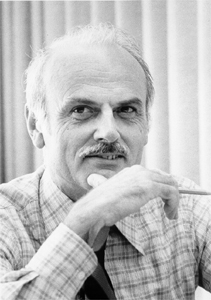This page is based on this
Wikipedia article Text is available under the
CC BY-SA 4.0 license; additional terms may apply.
Images, videos and audio are available under their respective licenses.
Multiple Virtual Storage, more commonly called MVS, was the most commonly used operating system on the System/370 and System/390 IBM mainframe computers. It was developed by IBM, but is unrelated to IBM's other mainframe operating systems, e.g., VSE, VM, TPF.

OS/2 is a series of computer operating systems, initially created by Microsoft and IBM under the leadership of IBM software designer Ed Iacobucci. As a result of a feud between the two companies over how to position OS/2 relative to Microsoft's new Windows 3.1 operating environment, the two companies severed the relationship in 1992 and OS/2 development fell to IBM exclusively. The name stands for "Operating System/2", because it was introduced as part of the same generation change release as IBM's "Personal System/2 (PS/2)" line of second-generation personal computers. The first version of OS/2 was released in December 1987 and newer versions were released until December 2001.
SQL is a domain-specific language used in programming and designed for managing data held in a relational database management system (RDBMS), or for stream processing in a relational data stream management system (RDSMS). It is particularly useful in handling structured data where there are relations between different entities/variables of the data. SQL offers two main advantages over older read/write APIs like ISAM or VSAM. First, it introduced the concept of accessing many records with one single command; and second, it eliminates the need to specify how to reach a record, e.g. with or without an index.

The IBM System i is IBM's previous generation of midrange computer systems for IBM i users, and was subsequently replaced by the IBM Power Systems in April 2008.
Journaled File System or JFS is a 64-bit journaling file system created by IBM. There are versions for AIX, eComStation, OS/2, and Linux operating systems. The latter is available as free software under the terms of the GNU General Public License (GPL). HP-UX has another, different filesystem named JFS that is actually an OEM version of Veritas Software's VxFS.

Chris Date is an independent author, lecturer, researcher, and consultant, specializing in relational database theory.

A relational database management system (RDBMS) is a database management system (DBMS) based on the relational model of data. Most databases in widespread use today are based on this model.

IBM Db2, announced in 2017, is the successor name to the 1980s-introduced DB2.

IBM Information Management System (IMS) is a joint hierarchical database and information management system with extensive transaction processing capabilities.
ADABAS, a contraction of “adaptable database system", is a database package that was developed by Software AG to run on IBM mainframes. Launched in 1971 as a non-relational software package, earnings reports for the package's vendor were being followed by The New York Times in the early 1980s.
Systems Application Architecture (SAA), introduced in 1987, is a set of standards for computer software developed by IBM. The SAA initiative was started in 1987 under the leadership of Earl Wheeler, the "Father of SAA". The intent was to implement SAA in IBM operating systems including MVS, OS/400 and OS/2. AIX, IBM's version of the UNIX operating system, was not a target of SAA, but does have interoperability with the SAA family.
K42 is a discontinued open-source research operating system for cache-coherent 64-bit multiprocessor systems. It was developed primarily at IBM Thomas J. Watson Research Center in collaboration with University of Toronto and University of New Mexico. The main focus of this OS is to address performance and scalability issues of system software on large-scale, shared memory, NUMA multiprocessor computers.
Apache Derby is a relational database management system (RDBMS) developed by the Apache Software Foundation that can be embedded in Java programs and used for online transaction processing. It has a 3.5 MB disk-space footprint.
In computing, Advanced Program to Program Communication or APPC is a protocol which computer programs can use to communicate over a network. APPC is at the application layer in the OSI model, it enables communications between programs on different computers, from portables and workstations to midrange and host computers. APPC is defined as VTAM LU 6.2
Transaction processing is a way of computing that divides work into individual, indivisible operations, called transactions. A transaction processing system (TPS) is a software system, or software/hardware combination, that supports transaction processing.
Donald Haderle is an American computer scientist and IBM Fellow, best known for his work on relational database management systems (RDBMS). He led the architecture and design of DB2, one of the first commercial RDBMSs, which led to his moniker "Father of DB2." DB2 debuted on IBM's mainframe system MVS in 1983 and validated the applicability of relational databases for high performance transaction processing. With DB2 enterprises store, retrieve, and analyze their business transaction data. The cited reference describes the early technology hurdles, the shift from a monolithic architecture to a distributed architecture portable across many operating systems and the technology collaborations with IBM Research. DB2 is used in most enterprises around the world.





